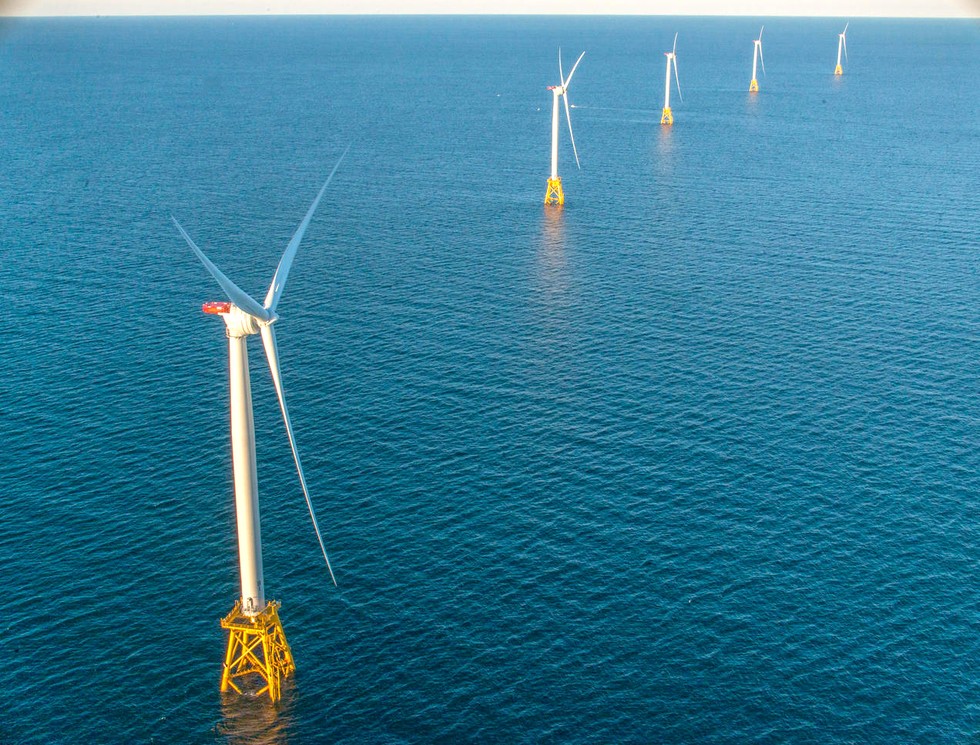New Jersey utility regulators will collect more than $26 million in fees from offshore wind energy developers to fund research and monitoring – an assessment of $10,000 per megawatt of capacity.
The state Board of Public Utilities in mid-December approved memoranda of understanding with developers Ørsted, the Shell New Energies US/EDF Renewables North America joint venture Atlantic Shores, and the state Department of Environmental Protection.
Under the agreements the DEP will administer use of the funds collected by the BPU as part of its approvals in June 2021 for the second and third wind projects now planned foff New Jersey: The 1,509 MW Atlantic Shores array off Long Beach Island and the Ørsted 1,148 MW Ocean Wind 2 project to the south off Atlantic City.
Together the developers will kick in $26,576,000 according to BPU documents.
The state’s “Research and Monitoring Initiative” will be governed by a steering committee drawn from the DEP and BPU staffs, according to the agreement between the agencies.
According to that document the group will focus on “activities that reflect the State’s highest research priorities and that will further the scientific understanding of the impacts from the offshore wind farms’ installation and operations, changes in vessel traffic along shipping lanes, and changes in fishing practices, both beneficial and detrimental, on existing natural resources and ecosystems, with respect to physical and chemical characteristics of the ocean, and with respect to both flora and fauna in coastal environments and in the benthic environment and waters off of New Jersey’s coastline.”
The agreement specifies the fees must be “dedicated to the performance of research and monitoring initiatives concerning the conditions of and potential impacts upon natural and aquatic resources, including wildlife and fisheries that may be implicated by the introduction of offshore wind generating capacity in the Atlantic Ocean.”
The research and monitoring fund is being put together amid accelerating efforts by the Biden administration and state governments to advance more offshore wind proposals – and a steady clamor from the fishing industry for more forward-looking scientific assessments of potential impacts.
The Responsible Offshore Development Alliance, a coalition of fishing groups and communities, compiled a list of proposed research projects for 2022, “which we have circulated to relevant state and federal agencies. We’re also currently working on a broader rollout plan. New Jersey DEP reached out to us during the development of these priorities and were very interested given that it came directly from the fishing industry,” said Fiona Hogan, RODA’s research director.
“At this stage we don’t know how the research and monitoring program would be structured, however, we’re hoping the New Jersey DEP creates an inclusive and transparent process for that program,” said Hogan. “RODA is excited to engage in that process and support it in any way possible.”
The RODA recommendations are based in part on 88 survey responses the group received from the fishing industry participants across the United States. In New Jersey, the Atlantic Shores and Ocean Wind 2 projects with a combined 192 turbines planned has alarmed surf clam and scallop dredge fishermen, who say safety concerns will effectively shut them out of the arrays.
“The research recommendations evidenced a clear perception that meaningful interaction has not occurred with the fishing industry during OSW (offshore wind) siting processes,” notes the introduction to the RODA paper.
“The fishing industry has appealed to regulatory authorities to create regional environmental monitoring plans to address a large number of outstanding questions, but observe that research approaches remain piecemeal.
"The fishing industry expressed clear concern over the lack of cumulative impacts analysis identifying fishery and ecosystem-level impacts from compounding impact factors and across multiple projects,” the report says. “The introduction of human made structures to the ocean will affect every aspect of the ecosystem, as seen in the numerous research priorities identified below. At present, limited or no cumulative impact analyses exist at regional levels. A detailed analysis should address all scales as well the effects of project distance to the cumulative impact intensity.”
At its December meeting the BPU also agreed to join the National Offshore Wind Research and Development Consortium, a national nonprofit public-private partnership “focused on advancing offshore wind technology in the U.S. through high impact research projects and cost-effective responsible development, while maximizing other economic and social benefits,” according to a BPU statement.
“We are excited to be joining NOWRDC as the representative for the State of New Jersey,” said NJBPU President Joseph L. Fiordaliso. “Our participation in this prominent national organization will aid our offshore wind efforts and play a key role in helping us meet Governor Murphy’s goal of 7,500 MW of offshore wind energy by 2035.”
Joining the group positions New Jersey a platform to collaborate with other states in “coordinating regional monitoring and scientific and technical research at the state and regional levels to address issues related to offshore wind energy project planning, siting, construction, and operation,” according to the BPU.
The board will contribute $1 million over four years to support research initiatives in offshore wind, and coordinate NOWRDC activities with the WIND Institute and the New Jersey Economic Development Authority.
Meanwhile next door, New York Gov. Kathy Hochul announced her state will spend $500 million to prepare ports, manufacturing and supply chain infrastructure for offshore wind.
In her annual State of the State address Hochul also said it’s time to “unlock the next frontier of offshore wind development” with planning for floating turbines in deeper waters. The New York State Energy Research and Development Authority will begin a new master plan for developing floating offshore win development, said Hochul.
The agency is also working on a cable corridor study, with the aim of delivering 6 gigawatts of wind-generated power directly into New York City.







